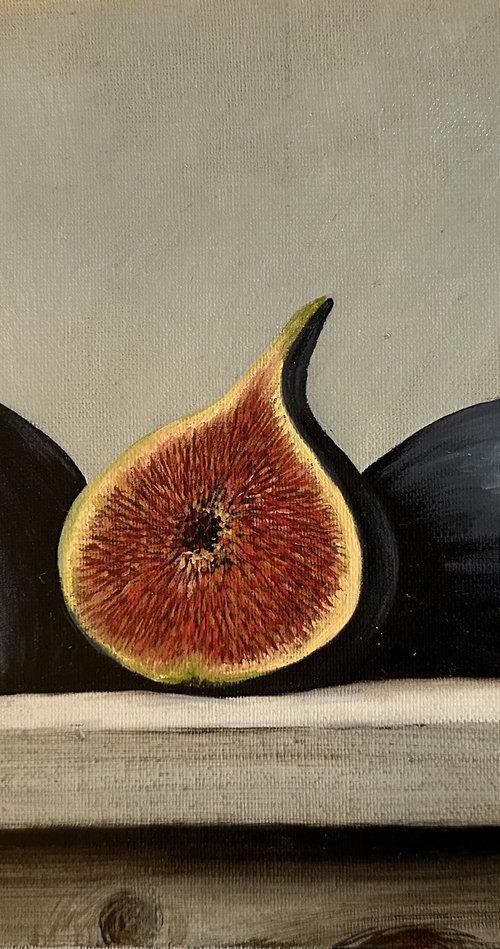Nontraditional and Modern Oil Paintings for Sale
Nontraditional and Modern Oil Paintings for Sale
Blog Article
Exploring Everything About Oil Paints: An Overview to Comprehending Their Charm and Worth
Oil paintings have mesmerized target markets for centuries, supplying a glance right into the imaginative mastery of numerous ages. Their rich history is intertwined with innovative strategies and extensive emotional expression. Comprehending the materials and approaches behind these art work can improve appreciation. Additionally, the market for oil paintings provides opportunities for collectors and investors alike. As one explores this interesting globe, the question develops: what makes an oil painting really important?
The Background of Oil Painting: A Trip Via Time
Oil paint has roots that date back to old times, it truly grew during the Renaissance, when artists uncovered its flexibility and abundant color capacity. Early examples can be traced to the 7th century, with methods progressing notably across societies. The medium ended up being noticeable in Northern Europe in the 15th century, especially via the works of artists like Jan van Eyck, that pioneered its use for detailed realism and vivid shades. This duration noted a departure from tempera paints, allowing for greater depth and appearance. As oil painting spread, it influenced plenty of artists, bring about masterpieces by popular numbers such as Leonardo da Vinci and Rembrandt. The medium's heritage continues, shaping the art globe well right into modern times.
Comprehending Oil Repaints: Materials and Techniques
As artists check out the globe of oil paints, they run into a varied selection of materials and techniques that define this medium. The main parts of oil paint consist of pigments, which provide shade, and drying out oils, such as linseed, that bind the pigments and assist in application. Different additives can customize the paint's texture and drying out time, improving convenience. Techniques like glazing, where transparent layers are developed, and impasto, which includes using thick paint, enable for various visual impacts. Furthermore, making use of brushes, scheme blades, and even fingers can produce special appearances and coatings. Recognizing these materials and techniques allows musicians to totally share their imagination and accomplish the preferred effect in their artwork.
The Role of Shade in Oil Paints
Color plays a pivotal duty in oil paints, affecting both aesthetic allure and psychological resonance. Recognizing color theory fundamentals, including the connections between tones, can enhance a musician's capacity to communicate mood and atmosphere. In addition, mastering shade blending methods permits greater deepness and richness in a painting's scheme.

Color Concept Fundamentals
Understanding shade theory is crucial for musicians functioning with oil paints, as it creates the foundation for creating harmonious and aesthetically engaging make-ups. Color concept includes the study of just how colors connect, the shade wheel, and the partnerships in between key, additional, and tertiary colors. Musicians use complementary shades to improve contrasts and create centerpieces, while comparable colors advertise unity and cohesiveness within a piece. Furthermore, the concepts of cozy and great colors influence the perception of deepness and area in a painting. Realizing these principles permits artists to adjust color effectively, leading the audience's eye and connecting their intended message. Mastery of shade concept eventually enriches a musician's capacity to share feelings and concepts through their work.
Psychological Impact of Color
The emotional effect of shade in oil paintings plays an important duty in how customers regard and attach with artwork. Colors evoke certain feelings and state of minds, affecting the audience's mood. Warm shades like oranges and reds can develop a feeling of heat and energy, while trendy tones such as blues and greens frequently evoke calmness or introspection. Artists tactically select shade schemes to boost narrative components, leading the target market's psychological journey. The saturation and contrast of colors further amplify these effects, attracting focus and producing emphasis. Ultimately, the interplay of shades in oil paints not only enhances their aesthetic charm but also works as an effective tool for emotional expression, enhancing the audience's experience and interpretation.
Color Combining Techniques
While lots of elements of oil painting add to the overall make-up, mastering shade mixing methods is necessary for attaining preferred results and deepness. Shade blending can be approached through numerous techniques, consisting of the additive and subtractive processes. Additive blending entails integrating colors of light, while subtractive mixing counts on pigments, where shades blend to develop new shades. Artists usually utilize a limited palette to produce harmonious works, comprehending the connections between primary, second, and tertiary colors. Strategies such as glazing and scumbling further boost depth and luminance. By masterfully mixing shades, a musician can stimulate feelings, develop focal points, and accomplish a feeling of realism, ultimately raising the painting's aesthetic and emotional impact.
Famous Oil Painters and Their Iconic Works

Well known for their mastery of color and method, oil painters have created some of one of the most well known art work in background. Distinguished musicians like Vincent van Gogh mesmerized target markets with his stirring brushwork in "Starry Night," while Claude Monet's "Perception, Dawn" laid the groundwork for Impressionism. Leonardo da Vinci's "Mona Lisa" stays a long-lasting sign of creative brilliant, showcasing his skill in capturing human expression. On the other hand, Rembrandt's "The Night Watch" shows his innovative use light and shadow. Various other notable numbers consist of Pablo Picasso, that transformed contemporary art with his bold trial and error in works like "Les Demoiselles d'Avignon," and Georgia O'Keeffe, whose vivid depictions of landscapes and flowers helped define American modernism. Each artist's distinct style contributed substantially to the oil paint landscape.
Just how to Assess the Top Quality of an Oil Painting
Reviewing the top quality of an oil painting entails a cautious assessment of workmanship methods, along with an evaluation of color and composition. Observing brushwork, layering, and the application of paint can disclose the artist's ability level. In addition, the interaction of colors and the overall arrangement of components add significantly to the paint's aesthetic value.
Analyzing Workmanship Methods
A thorough evaluation of craftsmanship techniques is important for identifying the quality of an oil paint. Critics ought to first check out the application of paint; thick, distinctive brushstrokes may recommend a competent hand, while extremely uniform applications could show a lack of deepness. oil paintings for sale. The layering strategy is additionally essential; the visibility of glazes and differed density can enhance luminosity and intricacy. In addition, the high quality of the products used, such as the canvas and pigments, plays a substantial role in more info longevity and overall aesthetic. Focus to information in aspects like sides and shifts between colors shows the artist's dedication to their craft. Inevitably, these techniques add to the painting's psychological influence and market value, functioning as signs of the musician's skill and intent
Analyzing Shade and Structure
While reviewing the quality of an oil painting, one should focus on the interaction of shade and make-up, as these components are fundamental to the artwork's overall influence. Color choices can evoke emotions and establish state of mind; for that reason, the artist's combination ought to be checked out for consistency and contrast. A well-balanced composition routes the viewer's eye and produces a sense of unity. Artists typically utilize strategies like the regulation of thirds or leading lines to boost aesthetic rate of interest. Furthermore, the usage of light and shadow can add depth, boosting the three-dimensionality of the paint. Eventually, a successful oil painting marries color and make-up, involving the customer and inviting a deeper appreciation of the musician's vision and method.
Caring for and Preserving Oil Paintings
Proper treatment and conservation of oil paintings is necessary for preserving their stability and longevity. To shield these art work, it is crucial to show them away from straight sunshine, which can trigger fading and discoloration. Maintaining a stable setting with controlled temperature and moisture more help in preventing damage. Cleaning should be done gently making use of a soft, completely dry towel, staying clear of any extreme chemicals that might hurt the paint or varnish. Regular inspections for signs of deterioration, such as breaking or flaking, are advisable. When transferring or storing oil paints, correct cushioning and framing are necessary to stay clear of physical damage. Ultimately, diligent treatment adds to the aesthetic charm and value of oil paintings with time.
The Marketplace for Oil Paintings: Accumulating and Investing
Comprehending the marketplace characteristics for oil paintings is essential for enthusiasts and investors alike. The value of these artworks is affected by different factors, including the musician's reputation, historical importance, and present patterns. Enthusiasts usually look for pieces that reverberate personally while taking into consideration prospective recognition in worth. Galleries and public auctions work as key venues for acquiring and selling, with prices changing based on demand and rarity. Buying oil paintings needs research study right into the marketplace, along with an understanding of credibility and provenance. In addition, arising musicians might offer opportunities for substantial returns, while developed names can regulate high prices. Overall, a critical strategy to collecting can yield both visual satisfaction and financial rewards.

Frequently Asked Concerns
What Are the Ecological Impacts of Oil Painting Materials?
The ecological impacts of oil painting materials consist of the launch of volatile organic compounds (VOCs), unsafe waste generation, and source removal for pigments. These factors add to contamination and environmental destruction, raising issues amongst ecologically aware artists and consumers.
How Do Different Canvases Affect Oil Paint Results?
Various canvases influence oil painting results considerably. Surface area, structure, and absorbency quality can alter paint application, drying times, and shade vibrancy. Musicians often choose details canvases to attain wanted impacts and improve their artistic expression.
Can Oil Paintings Be Restored if Harmed?
If harmed, Oil paintings can without a doubt be recovered. Professional conservators make use of various techniques to repair tears, tidy surface areas, and address discoloration, making sure that the art work preserves its initial beauty and value for future generations.
What Are the Indications of an Original Oil Painting?
The indicators of an original oil painting include visible brush strokes, structure variations, and an unequal canvas weave (oil paintings for sale). Furthermore, authenticity may be validated through provenance, trademarks, and the existence of a varnish layer unique to oil tools
How Has Innovation Influenced Modern Oil Paint Techniques?
Innovation has actually considerably influenced contemporary oil paint methods by presenting digital devices for preparation, improved products for structure and long life, and on the internet systems for sharing and marketing art, consequently broadening artists' creative opportunities and target market reach. Oil painting has origins that date back to old times, it absolutely grew during the Renaissance, when artists uncovered its convenience and abundant shade potential. The psychological influence of color in oil paintings plays a vital function in how viewers connect and view with artwork. While many elements of oil paint add to the total composition, grasping shade blending strategies is vital for accomplishing wanted effects and depth. Reviewing the quality of an oil painting involves a cautious evaluation of workmanship methods, as well as an evaluation of shade and make-up. While reviewing the quality of an oil painting, one have to focus on the interplay of shade and structure, as these elements are fundamental to the artwork's overall impact.
Report this page